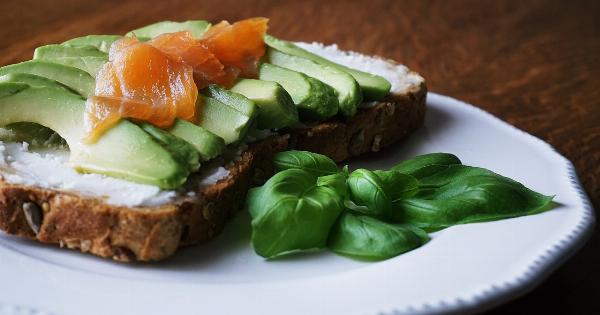Acne is a common dermatological condition that affects millions of people worldwide. It is characterized by the presence of pimples, blackheads, and whiteheads on the skin, especially on the face, chest, and back.
While there are various factors that contribute to the development of acne, one persistent myth is the relationship between acne and chocolate consumption. In this article, we aim to debunk this myth and provide evidence-based information regarding acne and chocolate.
1. Chocolate Causes Acne
One of the most prevalent myths surrounding acne is the belief that chocolate directly causes breakouts. However, scientific studies have found no clear evidence to support this claim.
Acne is primarily caused by hormonal fluctuations, excess oil production, and the presence of bacteria on the skin. The consumption of chocolate does not directly impact any of these factors. Therefore, eating chocolate alone is unlikely to be a primary cause of acne.
2. Chocolate Increases Sebum Production
Another misconception is that chocolate consumption increases the production of sebum, which can clog the pores and contribute to acne formation. Sebum is an oily substance produced by the sebaceous glands in the skin.
While it is true that diet can influence sebum production, there is no conclusive evidence linking chocolate consumption to increased sebum production specifically.
3. Only Certain Types of Chocolate Can Cause Acne
Some people believe that only certain types of chocolate, such as milk chocolate or chocolate with high sugar content, can trigger breakouts.
However, this notion lacks scientific evidence, and it is important to note that different individuals may react differently to various types of chocolate. The ingredients in chocolate, such as cocoa, milk, and sugar, can vary widely between different products, making it difficult to determine a specific type of chocolate that might cause acne.
4. Chocolate Aggravates Existing Acne
While chocolate consumption may not directly cause acne, some individuals might find that consuming certain foods, including chocolate, can exacerbate existing acne. This, however, varies from person to person.
Certain ingredients present in chocolate, such as milk or sugar, may trigger inflammation in some individuals, leading to a worsening of acne symptoms. It is essential to pay attention to personal triggers and make adjustments to one’s diet accordingly.
5. Dark Chocolate is Better for Acne
There is a common belief that dark chocolate is a healthier alternative for those with acne-prone skin. Dark chocolate contains a higher percentage of cocoa, which is rich in antioxidants.
Antioxidants can help reduce inflammation and protect the skin against oxidative stress. While dark chocolate may have certain health benefits, it is important to remember that it still contains other ingredients like sugar and fat, which could potentially impact acne.
Overall, moderation and individual sensitivity should be considered when consuming any type of chocolate.
6. Cutting Out Chocolate Will Cure Acne
Some people may be led to believe that completely eliminating chocolate from their diet will miraculously clear their acne. Unfortunately, it is not as simple as that.
Acne is a multifactorial condition influenced by various factors, including hormonal changes, genetics, and skincare habits. While adjusting one’s diet might have a positive impact on acne for some individuals, it is unlikely to be a universal cure.
A holistic approach, including proper skincare, stress management, and medical guidance, is crucial for managing acne effectively.
7. Chocolate Alternatives are Acne-safe
People who are conscious of their acne may opt for chocolate alternatives such as carob or cocoa-free variations. These substitutes are often marketed as acne-safe or acne-friendly.
However, it is important to note that the impact of these alternatives on acne can vary depending on the individual. Some may still experience breakouts due to other ingredients in the product. It is essential to read labels carefully, be aware of personal triggers, and listen to your skin’s response when trying chocolate alternatives.
8. Eating Chocolate in Moderation
When it comes to chocolate and acne, moderation is key. While no conclusive evidence supports the claim that chocolate directly causes acne, excessive consumption of any food, including chocolate, can lead to imbalances in overall health.
Additionally, chocolate often contains added sugars and fats, which can contribute to inflammation in some individuals. By enjoying chocolate in moderation, individuals can satisfy their cravings without overindulging and potentially impacting their skin health.
9. Skincare and Acne Management
It is important to remember that managing acne extends beyond dietary choices. Establishing a proper skincare routine can play a critical role in preventing and managing acne.
Cleansing the skin twice daily, using non-comedogenic skincare products, and avoiding excessive touching or picking of the blemishes are essential steps for maintaining healthy skin. Additionally, seeking professional advice from dermatologists can provide personalized guidance and help develop an effective treatment plan tailored to individual needs.
10. Conclusion
Despite the widespread belief in a connection between acne and chocolate consumption, scientific evidence does not support this claim.
Acne is a complex condition influenced by various factors, including hormonal imbalances, excess sebum production, and bacterial presence. While some individuals may experience worsened symptoms after consuming chocolate or specific ingredients present in chocolate, it is not a universal trigger for acne.
Moderation, self-awareness, and a comprehensive approach to skincare and acne management are key in maintaining healthy skin.































